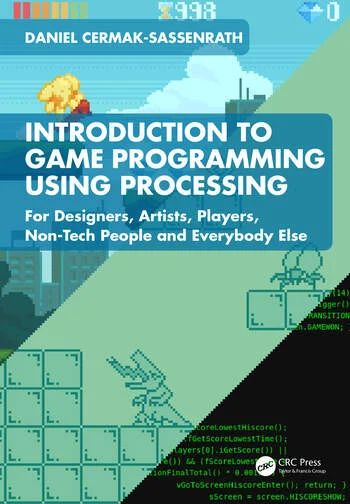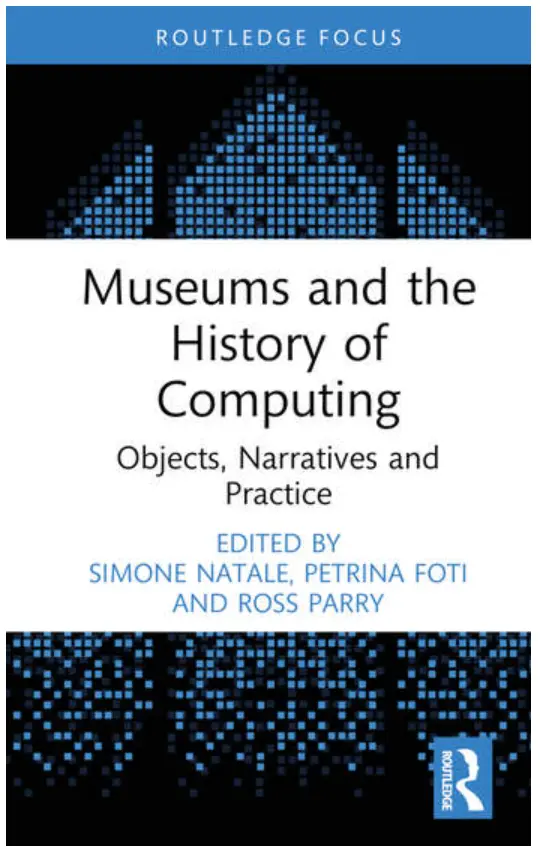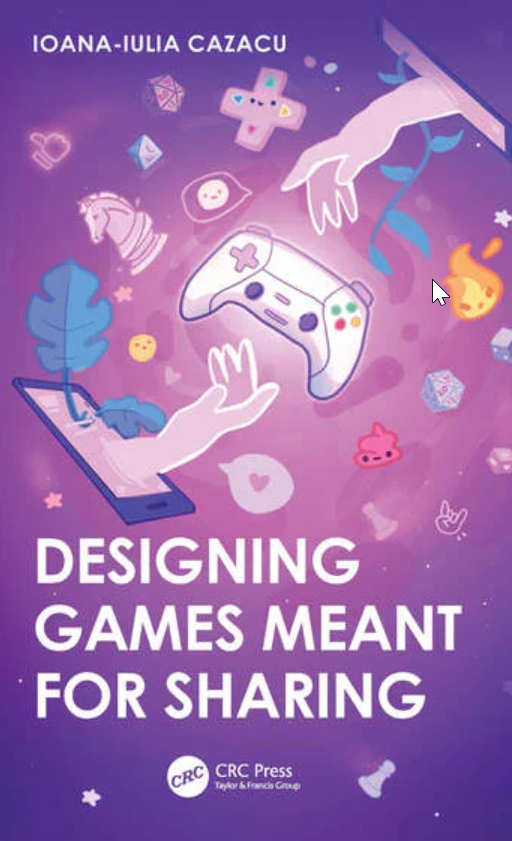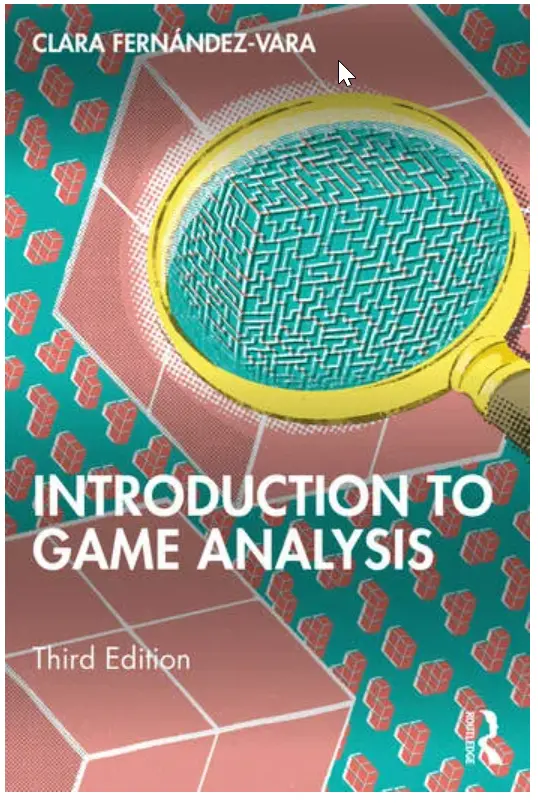Gostava de ter acesso a este livro:

Introduction to Game Programming using Processing For Designers, Artists, Players, Non-Tech People and Everybody Else de Daniel Cermak-Sassenrath
“This is an introductory textbook focusing on games (specifically interaction and graphics) as a pathway into programming. It empowers readers to do basic programming, prototyping, game creation, and other highly interactive applications, all from scratch and without any prior programming knowledge.
Using the popular programming language Processing, this book describes, explains, and demonstrates the basic and general programming principles and mechanisms used in typical game algorithms and concrete game projects. Chapters cover basic graphics, text output, loops, data types and variables, movement, time, audio and sound, debugging, classes and objects, event-based programming, real-time input controls, computer speed compensation, animation, tiling, scrolling, collision detection, basic AI, and much more. Additional support materials such as code examples and demo programs are available to download from the book’s webpage: dace.de/gameswithprocessing
This book is a great resource for students and aspiring professionals looking for an approachable entry into game programming.”
+infos(oficial): LINK

Museums and the History of Computing Objects, Narratives and Practice editado por Simone Natale, Petrina Foti, Ross Parry
“Museums and the History of Computing examines the critical role that cultural organizations, such as museums and galleries, play in shaping ‘digital heritage’: the cultural heritage surrounding computer technology.
Focusing on digital technologies as objects and practices that museums collect, exhibit, and preserve for the future, this book highlights how and why museums play a crucial role in preserving the rich heritage of the digital world, constructing powerful narratives that help make it relevant to the public. It demonstrates that the museum can be a powerful means of safeguarding and interpreting ephemeral and continually changing digital technology, offering new pathways for rethinking the very meaning of digital objects and practices in contemporary societies. It provides practices and strategies for the preservation and exhibition of computing artifacts and ways to accommodate and respond to narratives about histories of computing that circulate in the public arena. Bringing together leading museum and university researchers and practitioners, and mobilizing cross-cutting debates and approaches in areas such as museum studies, cultural heritage, history of technology, anthropology, and media studies, this book challenges us to think critically about what ‘digital’ is when examined not only as a tool but as a cultural object deserving of attention and a place within the museum.
Museums and the History of Computing is for museum studies students and researchers as well as museum practitioners – especially those with an interest in digital technology and heritage. It will be of interest to researchers and students interested in histories of computing and digital media and in digital media studies.”
+infos(oficial): LINK

Designing Games Meant for Sharing de Ioana-Iulia Cazacu
“This book talks about the importance of social mechanics in games and how these mechanics evolved over time to accommodate new technologies and new social contexts. It looks at the innovation happening in the field of new-age social games, discussing in detail what has been learnt from designing for the younger generation, how these findings can inform game design philosophy and how this can be applied to game development more broadly.
Part 1 of this book provides a brief history of games as social interaction and discusses the differences between online and offline social gaming. Part 2 covers Facebook social gaming and design lessons from first-generation social games. Part 3 introduces design philosophies for the hyper-social genre and includes an important chapter on design ethics. Finally, Part 4 looks ahead to the future of social games and how game designers can incorporate learnings from this book in their own work.
This book will appeal to game designers and students of game design looking to learn how to apply learnings from social game design in their own games.”
+infos(oficial): LINK

Introduction to Game Analysis de Clara Fernández-Vara
“This accessible, third edition textbook gives students the tools they need to analyze games, using strategies borrowed from textual analysis.
As game studies has become an established academic field, writing about games needs the language and methods that allow authors to reflect the complexity of a game and how it is played in a cultural context. This volume provides readers with an overview of the basic building blocks of game analysis—examination of context, content and distinctive features, and formal qualities—as well as the vocabulary necessary to talk about the distinguishing characteristics of a game. Examples are drawn from a range of games, non-digital and digital, and across history—from Pong to Fortnite—and the book includes a variety of examples and sample analysis, as well as a wealth of additional sources to continue exploring the field of game studies. This third edition revision brings the book firmly up to date, pulling in new examples and sources, and incorporating current key topics in this dynamic field, such as artificial intelligence and game streaming.
Introduction to Game Analysis remains an essential practical tool for students who want to become fluent writers and informed critics of games, as well as digital media in general.”
+infos(oficial): LINK
